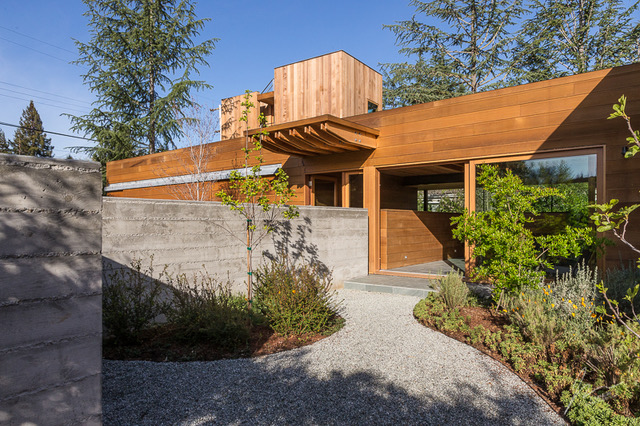Guest Blog by the Modern Architecture + Design Society
All photos courtesy of Jamie Leasure
The style that found expression in the iconic American designs of Charles and Ray Eames grew up in America after World War II and continued through the ’60s, earning the name “mid-century modern.” An American reflection of the International Style and Bauhaus movement in Europe, the mid-century modern movement found firm footing in California, especially when it came to residential architecture.
After WWII, suburbs began popping up across the American landscape, and architects with a new, modern attitude looked to create a new, modern, post-war aesthetic. The mid-century modern style prized a clean simplicity and integration with nature. Ample windows, open floor plans, and the (at the time) groundbreaking post-and-beam structure were all innovations that served to open up interior spaces and let the outdoors in. With an emphasis on function as much as form, mid-century modern homes targeted the needs of the average American family.
The popularity of such “mod” homes in California (often falsely generalized and called “Eichler Homes” after builder and real estate developer Joseph Eichler) has led people to refer to examples of residential mid-century modern architecture as “California Modern.” But that term continues to evolve as modern design works its way into the cultural fabric of California in new ways.
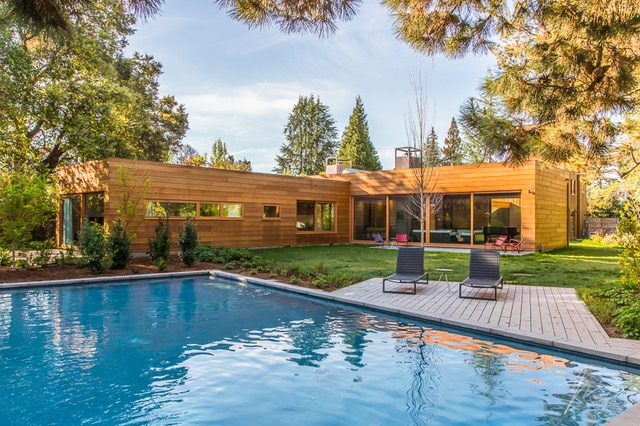
We recently toured Dan Spiegel’s Menlo Park “Low Rise House,” a modern renovation of his childhood home. Dan is a native Californian and founding partner of SAW, a transdisciplinary design firm that operates at the nexus of architecture, landscape architecture, and urban design. A longtime resident of Menlo Park with a Masters in Architecture from Harvard, Dan shared with us his thoughts on California modern design – past, present, and future. See if you can spot the embodiment of his theories in our exclusive images!
Q&A With Dan Spiegel
Menlo Park and the Bay Area in general is an area with a very rich history. Can you walk us through some of the history of the area, architecturally speaking, and especially speak to the culture of modern design?
That’s right — I grew up in Menlo Park, went to college at Stanford, and after several years on the east coast, have returned back to the Bay Area. While there isn’t necessarily one cohesive architectural history for the region, one of the more interesting architectural legacies is the development of a uniquely Californian modern vernacular, primarily in the 1930’s and 1940’s. These buildings, typified by the work of William Wurster, Joseph Eichler, Cliff May, Richard Neutra, and others, embraced a modernist sense of flexible spatial organization, often combined with the textures of exposed natural materials. Most importantly, the best of these structures matched their material and economic rationalism with a heightened sensitivity to context, climate, and landscape. They placed significant value on the space around a structure, and sat lightly on the land.
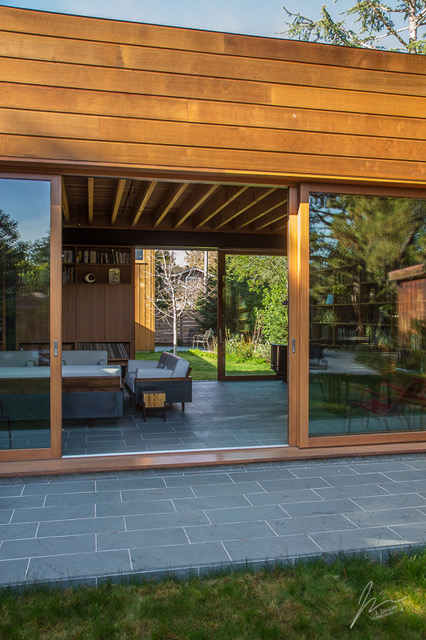
Looking toward the future, how do you see this area evolving, culturally and architecturally?
The area has certainly evolved, though perhaps not architecturally. The growth of the tech industry has been well documented, and a lot of good things have come with that: jobs, wealth, investment in schools. But in the meantime, housing prices are skyrocketing, turning people’s homes into high-end financial commodities. As these lots get increasingly expensive, homeowners and (more likely) developers seek to take full advantage of their investment potential and build out McMansions on every allowable square inch on their lots. While these houses have some of the economic rationalism of the California vernacular, they completely lack the relationship to the landscape, climate, and community. On the other hand, many of the people moving to the neighborhood are young, design-oriented problem solvers, working in tech or other industries that require an understanding of interrelated systems. Hopefully, this mindset will drive the demands that these new owners will place on their built environment — encouraging architecture that works as a part of a community system, reintegrating our lives with our environments.
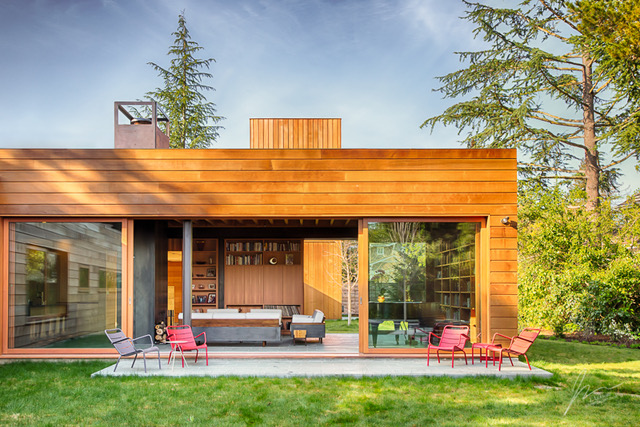
How did your upbringing in this area influence your work as a designer and your design aesthetic?
I actually grew up in a Cliff May kit house, though it had been significantly altered by the time my family moved there over 30 years ago. The renovation was designed by the previous owner, who worked at Sunset Magazine at the time. The house, hardly visible from the street through the thick of trees, deferred to the landscape. The rooms were no bigger than they needed to be, and the there was a structural honesty to the material expression. When I was born, there were no two-story houses on our street, but by the time my parents tore the house down in 2011, we were nearly the last single story house left. There was nothing fancy about the old house, but my friends enjoyed being there. It was open, connected to the outdoors, and extremely livable. We basically lived outdoors in the summer. I think this is where my interest in the interconnectedness of landscape and architecture comes from. I’m also still drawn to the expression of structure and the textures of natural materials that characterized a lot of houses in the area when I was young.
My parents are both professors at the Medical School at Stanford University, so from an early age I was surrounded by experimentation, exploration, and rigor — all key attributes of a successful design practice as well. The university instilled a lot of these characteristics in the surrounding area, but there is now an entrepreneurial spirit around here that has taken on a life of its own. As a result, it didn’t feel so crazy for me to start a business, take risks, do research, test experiments, and try to solve complicated problems.
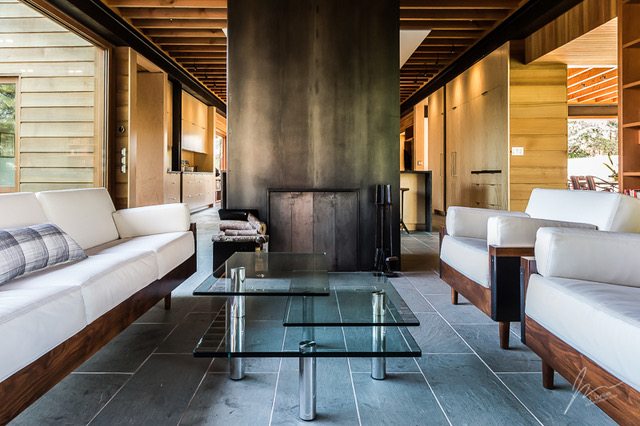
You’re the founder of SAW, which describes itself as a “transdisciplinary design firm.” Tell us a bit about how you came to found this company and its ethos.
In the most direct sense, SAW combines backgrounds in a number of fields towards improving the built environment. I founded the firm with my wife, Megumi Aihara, who studied art at Brown and then Landscape Architecture at Harvard, where we met. I majored in Public Policy in college and held a number of policy internships before pursuing architecture. The term “transdisciplinary” describes an approach to design that strives to remove the blind spots that arise from the often antiquated boundaries of strict professional silos, while still measuring against the standards of rigor of disciplinary training. We work this way for both pragmatic and philosophical reasons.
Pragmatically, building things requires a number of different types of knowledge and experience, from navigating zoning and building codes, to understanding neighborhood dynamics and the desires of different constituencies. Landscape often operates at large scales, over long timelines, and at an ecological as well as material level. While many projects are just thought of as buildings, all of these elements are usually required, so why not structure our business to address them all?
On the more philosophical end, consider how you might experience a space. Is the distinction between the interior and the exterior the most important thing to you? Probably not. Space is inhabited by people over time, and to the extent that the perception of time is continuous, so too is the experience of your environment. In other words, your experience of space doesn’t know where one discipline ends and the other begins — a successful design should have one design for the overall area, including landscape and architecture, rather than one design for the inside and another design for the outside. Taken more broadly, people are continually more interconnected these days, making problems more complex. For instance, which field should solve climate change? Some challenges demand reworking our organization of knowledge. It’s a primary responsibility of a designer to correctly identify the central problem to solve. We find that this “transdisciplinary” approach helps us to do that.
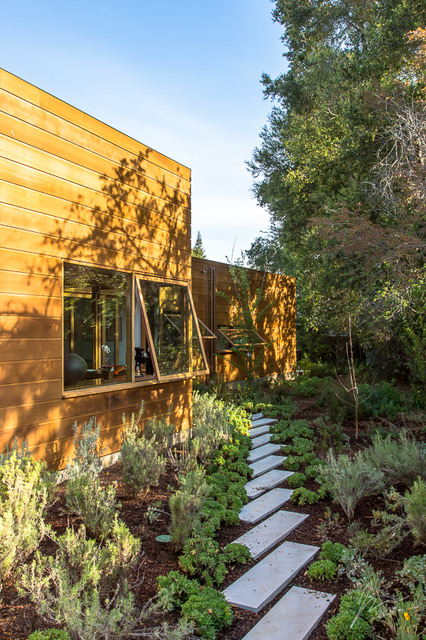
Where do you see your craft going?
In the long run, I’d like to see architects and designers take more agency in our environments. Since part of the design process is defining goals, I think we’re uniquely situated to have a strong voice in the growth of our cities and towns. Hopefully, down the road, SAW will be a practice that doesn’t have to be reactive about engaging in work. It would be interesting to take on a space where we could initiate our own projects from time to time — identifying opportunities and addressing them directly.
The Modern Architecture + Design Society produces architecture and design events across North America.
